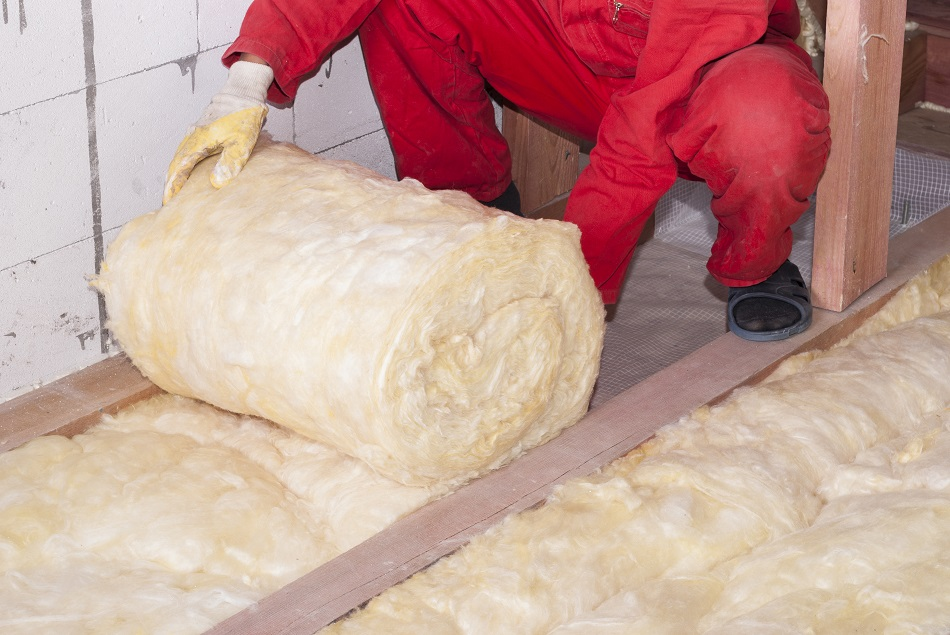
Image Credit: Kuchina/Shutterstock.com
Comprising a building's roof, foundation, and sides, building fabric is a fundamental factor when it comes to managing indoor temperature and environment.
Attaining high thermal performance of a building fabric translates to minimal heat loss in cold weather or minimal heat gain in hot weather. This reduces heating/cooling demands, as well as carbon emissions. The superior thermal performance also makes for a more comfortable, more hygienic indoor environment.
Designing a Building’s Fabric
The design of building fabric is a primary factor in establishing the amount of energy a building will use in its lifetime.
For a new build, decisions concerning the building fabric start right away. An ideal design can translate to substantial minimalization of heating and cooling demands. When the proper strategies are incorporated through superior design, the added costs associated with high-performing fabric may also be offset by purchasing a less energy-demanding HVAC system.
The building fabric should also include ventilation and natural light considerations while delivering thermal and moisture protection that is suitable for the location.
The design team should consider factors such as passive solar design, the overall HVAC system, electrical systems, and performance objectives. An essential factor influencing fabric design is climate. Both designs and materials can make use of or resolve various climate factors.
A second critical issue is the collective activities inside the building being designed. If the operations and equipment within the building produce a considerable amount of heat, thermal loads could be mainly internal as opposed to external.
A third issue that has considerable effects on the performance and demands of building fabric is building layout. Ideally, a building's footprint and orientation are determined in conjunction with the building fabric to optimize energy benefits and minimize energy costs.
Thermal Bridging
When the thermal performance of a building is being assessed, one of the focuses is u-value, a metric used to describe the total rate of heat transfer. U-value considers all thermal mechanisms under expected conditions.
In the UK, a low u-value indicates superior thermal performance by minimizing heat flow through the structure. UK building standards often refer to u-values when discussing thermal performance.
While u-values are used to holistically evaluate a building or building section, it also considers something called a thermal bridge. A thermal bridge is a location in a structure where there is a drop in insulation that increases the u-value, indicating heat loss, as well as a higher probability of condensation and mold formation. Some studies have indicated that as much as 25 percent of internal heat loss occurs via thermal bridges.
Passivhaus (Passive House) Standard
The Passivhaus Standard is a set of widely known, non-mandatory energy performance guidelines. Passivhaus standards far surpass those of most government building regulations. The standards are popular, in part, because there are numerous approaches to satisfy the requirements.
Typically, a Passivhaus building maximizes the amount of heat it receives from solar radiation. It also is designed to retain heat from any occupants and other heat producers. About 20 times more airtight than a standard building, a Passivhaus-certified building uses approximately 90 percent less heat, which translates to significant cost savings.
For a dwelling to be validated, the building fabric must be carefully designed, including high amounts of thermal insulation and it must essentially be airtight.
The Passivhaus concept also includes indoor air quality considerations. The fundamental premise is to leverage building fabric to tackle thermal comfort demands while producing an environment where heating uses the minimum amount of fresh air necessary to support good hygiene.
With locations in Europe and the United States, the Passivhaus Institute is the primary certification and training center for the thermal performance standard. The organization charges around £1,500 (about $2,000) to certify a dwelling. A certification via the institute is not mandatory, and most certified buildings have not been certified by the organization.
The price of achieving certification is difficult to pin down, with estimations for the added costs varying from 10 percent to 25 percent of the overall build cost.
While earning Passivhaus certification is possible for refurbished buildings, it is often challenging to attain without a major overhaul.
Sources and Further Reading
Disclaimer: The views expressed here are those of the author expressed in their private capacity and do not necessarily represent the views of AZoM.com Limited T/A AZoNetwork the owner and operator of this website. This disclaimer forms part of the Terms and conditions of use of this website.